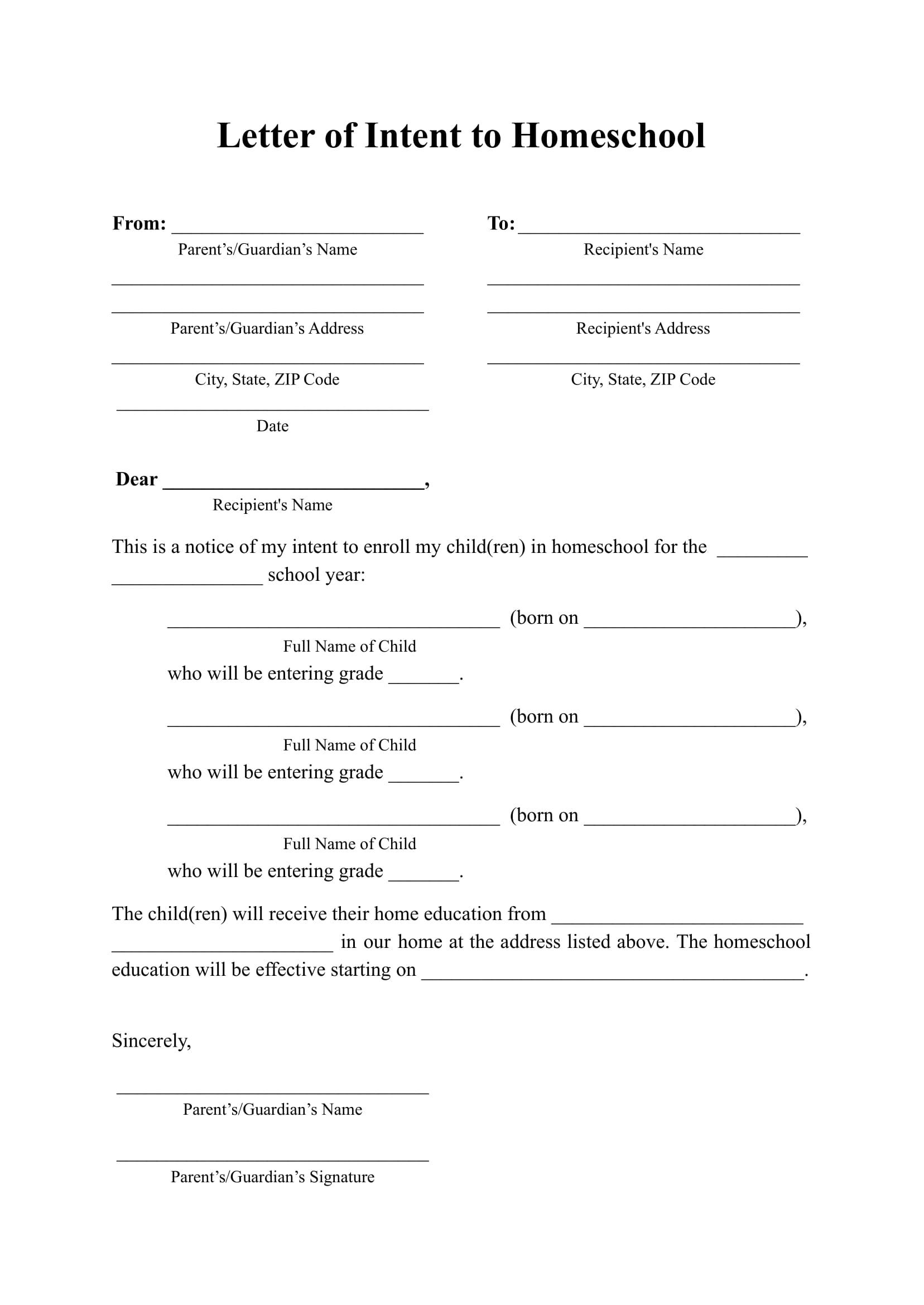There are some key details that should appear in every homeschool letter of intent form.
Step 1 – Information about the school district and the date
The first paragraph should contain the date of the letter, the name of the school district’s top executive (superintendent), and the school district’s number.
Step 2 – The statement to open the letter
Next, the letter should state its purpose which is notifying the board of the school about the reasons to transfer your child(ren) from to homeschool education.
Step 3 – Information about children
Next, the letter should provide information about each of your children), including their name, gender, and birth date.
Step 4 – Addresses of the homeschooled-to-be
Next, give the address of the child(ren) who will be learning at a home school.
Step 5 – Details about the teacher
A letter of intent to homeschool should tell who will be teaching your child(ren), and what subjects they will teach.
It should also state that in accordance with the state bodies regulating education matters, you will provide materials demonstrating proper homeschool education.
Step 6 – Signatures
At the end of the letter, the teacher should provide their signature, their full name and contact information (email and phone number), as well as the parents/guardians signature and contact information.
Step 7 – Notarization
The teacher and parent/guardian signatures should be notarized. To ensure that your letter of intent to homeschool is legally binding, some states require that the document be notarized. Your state might require a notary’s signature on your letter, or might not. Check with your state to find out.
